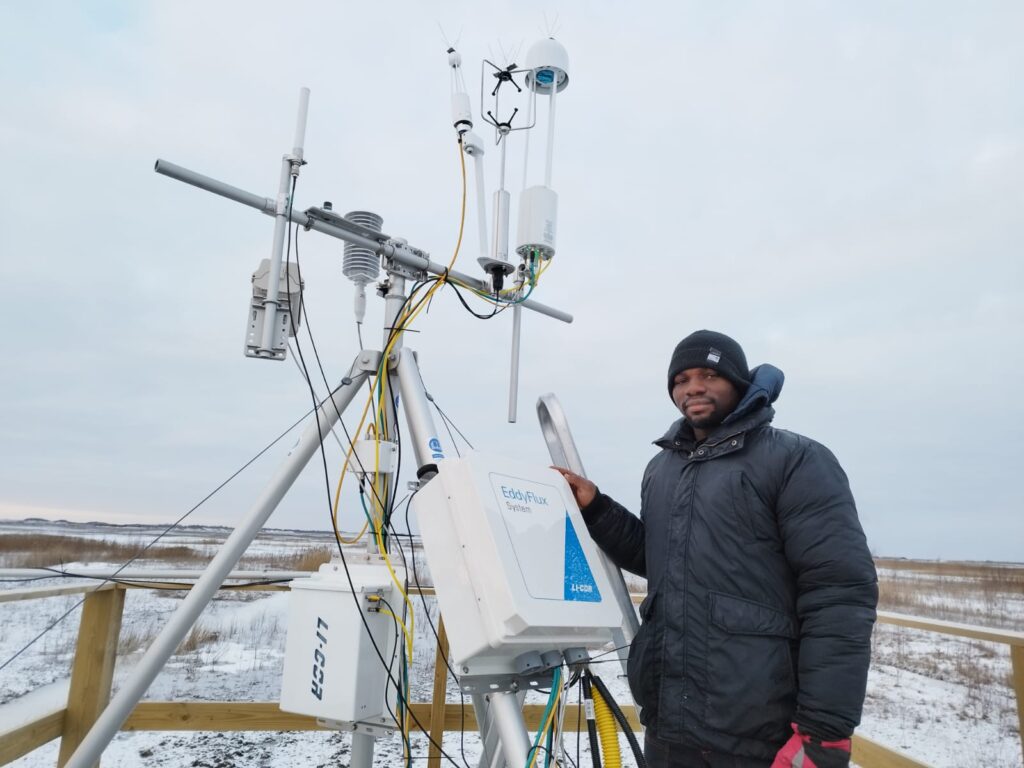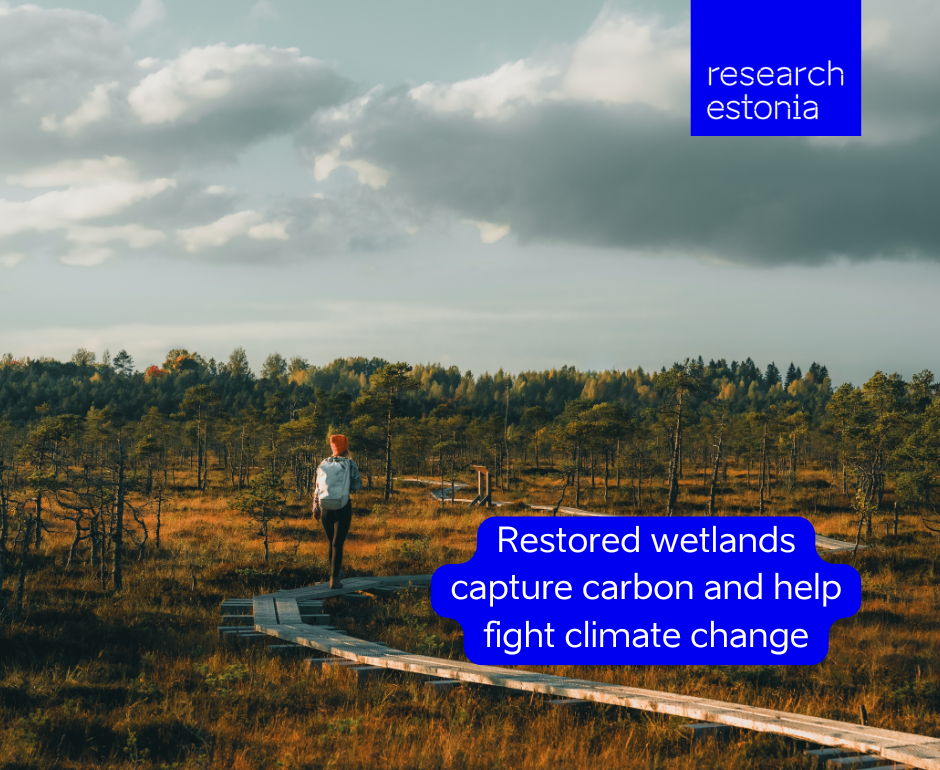Environmental and climate scientists see wetland restoration and management as a powerful tool for capturing carbon and addressing global warming. Researchers in the Environmental Technology Research Group at the University of Tartu, Department of Geography, are developing strategies to reduce greenhouse gas emissions while enhancing carbon storage.
Wetlands are nature’s underrated heroes. These distinctive ecosystems play a crucial role in maintaining the health of our planet. They act like giant sponges, absorbing excess water during heavy rains and slowly releasing it during dry seasons, thus preventing floods and sustaining water supplies. Moreover, wetlands do much more – they are great biodiversity hotspots and essential carbon sinks, helping to mitigate climate change.
Particularly, peatlands are unique wetlands that can store carbon for hundreds of years. In their natural state, they are always wet, thus preventing the decomposition of organic matter for thousands of years. However, despite their importance, humans have exploited this system to improve agricultural crop yield, draining off water and exposing trapped carbon to the atmosphere. This carbon then combines with atmospheric oxygen to form carbon dioxide, one of the dangerous gases heating our atmosphere and polar regions, threatening to turn even most of Europe virtually uninhabitable.
My research is in line with combating these challenges. My colleagues and I at the University of Tartu are actively involved in wetland restoration by rewetting, particularly in peatlands, to bring back the natural state of this system, which has been affected by human activities, ensuring they remain wet to store the trapped carbon for thousands of years and improve biodiversity.

Just like the historical draining of wetlands, our work shows that restoring them can also make a big difference. This highlights how closely our actions are connected with the natural environment. We simply no longer have the option to ignore this because I cannot imagine what it would be like if most parts of the world became practically uninhabited due to flooding because I cannot swim, and I think that none of us can, at least not for very long.
However, our work goes beyond restoration. We utilize advanced techniques like eddy covariance and chamber measurements with gas analyzers to monitor greenhouse gases emitted from wetlands around Europe.
Eddy covariance involves measuring the vertical wind speed and the concentration of greenhouse gases such as carbon dioxide (CO2) and methane (CH4) at high frequency to calculate gas exchanges between the wetland surface and the atmosphere. Meanwhile, chamber measurements involve placing a chamber with a calculated volume and surface area over a wetland section to measure the gases emitted directly from the soil or vegetation.
A combination of both methods by my research team gives us a detailed view of the overall greenhouse gas flux exchange between the biosphere and the atmosphere, thus helping us detect whether the wetland is storing or emitting carbon. The data we collect will enable us in the long term to forecast the future atmospheric CO2 and CH4 trends.
Consider our data collection similar to weather stations that predict daily weather. By continuously gathering this information, we can better understand the carbon balance in these ecosystems and predict how they respond to environmental changes. This helps us reduce carbon emissions from the wetland while preserving its natural state.
Author of this article is Isaac Okiti from University of Tartu. Editor Jaan-Juhan Oidermaa. Article written for the contest “Science in 3 minutes” organised by Estonian Academy of Sciences and The Estonian Young Academy of Sciences (EYAS). Main sponsor of the competition is Inclusive Financial Technology Foundation.
If this vision of a green future has planted a seed in your mind, don’t leaf it behind – grow with us in our next article as we dig deeper into sustainable solutions! Read more about Innovative maritime solutions for a greener future!
 Back
Back



